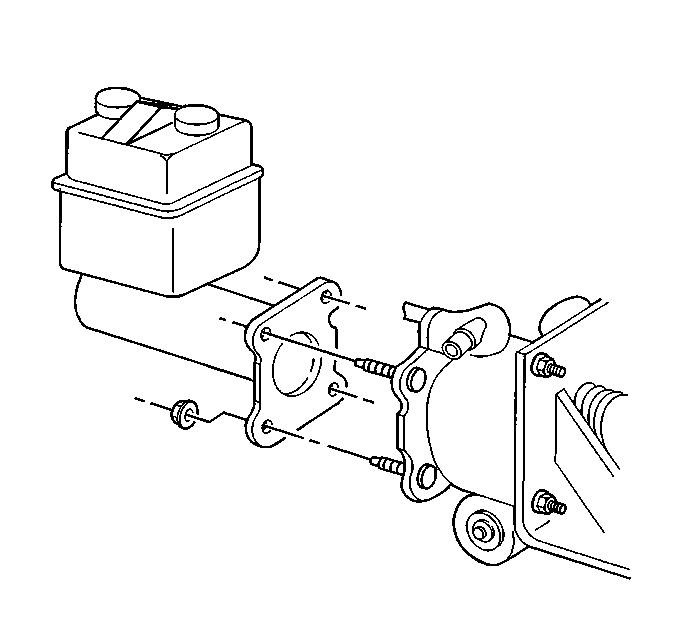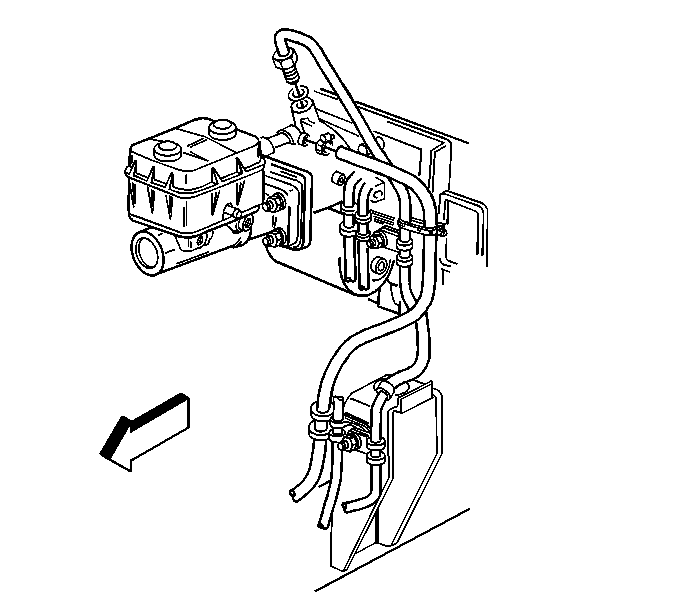Removal Procedure
Important: Flushing the system is required when dirt, sludge or water is found in the system. Flushing the system involves running clean fluid through the system until the draining fluid appears.
- Block the wheels.
- Disconnect the electrical connectors from the electrohydraulic pump and the flow switch.
- Remove the master cylinder bracket.
- Remove the master cylinder. Refer to Master Cylinder Replacement .
- Disconnect the hoses from the booster.
- Remove the booster pump rod nut from the lever.
- Remove the nuts at the booster.
- Remove the booster assembly.

Position the master cylinder away from the booster head. Secure the master cylinder in an upright position.

Installation Procedure
- Install the booster assembly to the vehicle.
- Install the nuts at the booster.
- Install the booster pump rod to the lever.
- Install the hoses to the booster.
- Install the master cylinder. Refer to Master Cylinder Replacement .
- Install the master cylinder bracket.
- Install the electrical connectors to the electrohydraulic pump and the flow switch.
- Fill the hydraulic pump reservoir.
- Bleed the system.
- Inspect the vehicle for the proper brake operation.
- Remove the wheel blocks.
Notice: Use the correct fastener in the correct location. Replacement fasteners must be the correct part number for that application. Fasteners requiring replacement or fasteners requiring the use of thread locking compound or sealant are identified in the service procedure. Do not use paints, lubricants, or corrosion inhibitors on fasteners or fastener joint surfaces unless specified. These coatings affect fastener torque and joint clamping force and may damage the fastener. Use the correct tightening sequence and specifications when installing fasteners in order to avoid damage to parts and systems.
Tighten
Tighten the nuts to 36 N·m (27 lb ft).
Tighten
Tighten the nuts to 68 N·m (50 lb ft).


Tighten
Tighten the nuts to 45 N·m (33 lb ft).
